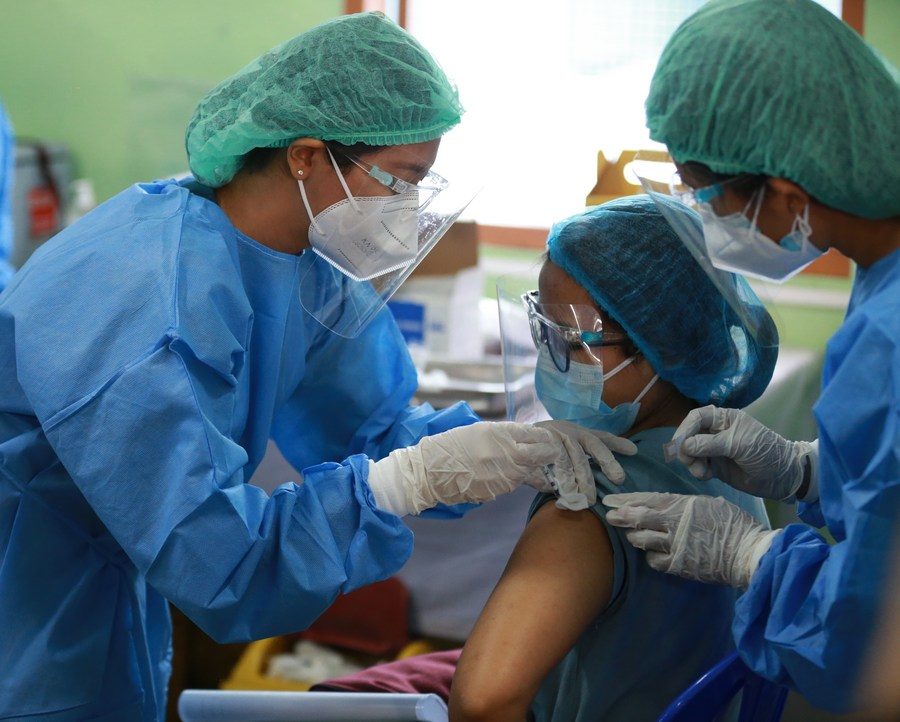[이데일리 이순용 기자]Winter is also heading towards the end of Sinab. There is only a month or so left behind this winter. This winter was exceptionally cold and snowy. The weather forecast was filled with news of the snow, saying that a day is far away from the cold wave that goes up and down 10 degrees below zero.
When the temperature drops, the muscles, blood vessels, and nerves of our body contract and become stiff. In addition, due to decreased activity and weakened immunity, existing diseases may worsen or hidden diseases may appear. The red light is on for health.
Seo Min-seok, a professor of family medicine at the Catholic University of Incheon St. Mary’s Hospital, said, “In winter, it is easy to lose exercise due to the increase in time spent indoors due to the cold, and differences in indoor and outdoor temperatures exceeding 20 degrees break our body balance and are susceptible to various diseases” He advised, “It is important to make an effort to maintain good health such as adequate indoor ventilation, sufficient fluid intake, washing hands after going out, and regular exercise.” Learn about the diseases you need to watch out for in the winter months left.
◇High blood pressure = When the cold wind blows in winter and the daily temperature difference is severe, the most important disease to watch out for is high blood pressure. This is because when exposed to a cold environment, blood pressure rises as blood vessel walls contract. It is especially dangerous in the morning when you just wake up. Even in healthy people, blood pressure rises 0.2~0.3㎜Hg each time the temperature decreases by 1 degree. This is a phenomenon that occurs when blood vessels in the skin contract to prevent body temperature from falling.
Deaths from complications of hypertension, such as cerebral hemorrhage, cerebral infarction, and myocardial infarction, also start increasing from October and appear most frequently in January and February. There are studies showing that half of cerebrovascular diseases and 30 to 35% of heart diseases are caused by high blood pressure. If you usually have high blood pressure, you should check your blood pressure in advance by measuring your blood pressure frequently. Smokers must quit smoking and refrain from excessive drinking. On days when the temperature drops sharply, instead of doing indoor exercise, and doing outdoor exercise during the day when the temperature rises is a way to avoid an increase in blood pressure.
◇ Diabetes = Diabetes is one of the top five causes of death in Korea. One in seven adults is sick. Diabetes should be especially careful in winter when it gets colder. Due to reduced physical activity and weakened immunity, mortality from diabetes increases.
Diabetes is scary because of complications rather than itself. Diabetic complications, such as foot necrosis, retinopathy, diabetic nephropathy, cerebrovascular disease, and coronary artery disease, can appear throughout the body and, if severe, can lead to death.
To prevent and treat diabetes, you need to pay attention to diet and exercise. People who are at high risk for diabetes are obese. A 1 kg increase in weight increases the risk of developing diabetes by about 9%. Skipping breakfast is bad for diabetes.
Eun-young Mo, a professor of endocrinology at Incheon St. Mary’s Hospital, said, “Diabetes is not a concept of cure, but a disease that requires lifelong management. If you prevent and manage in advance, you can not only delay the onset of diabetes, but also live healthy like a normal person.” .
◇ Hip fracture = In winter, you should be careful about hip fracture. This is because of an environment that is prone to fall, such as’black ice’, which is caused by freezing of the remaining moisture after ice or snow or rain. In addition, due to low sunlight, the synthesis of vitamin D in the body decreases, which can worsen osteoporosis.
For hip fractures, the plaster cannot be fixed like other areas, and there is a high risk of secondary complications due to long-term bed life, so surgical treatment is given priority. It is recommended to undergo surgery within 24 to 48 hours after the fracture occurs. However, even with surgery for hip fractures, the prognosis is often poor. Once a fracture occurs, the risk of refracture increases by more than three times, and the probability of returning to the preoperative state is only 50-70%.
In order to prevent hip fracture, it is important to prevent osteoporosis from occurring. Eating foods that increase bone density and continuing to strengthen muscle strength are necessary. In particular, exercise increases the absorption of calcium in the body and helps maintain bone density.
◇ Urinary Incontinence = When the weather gets cold, the bladder becomes more irritated and the amount of water that escapes through sweat and breathing decreases. More than 90% of domestic urinary incontinence patients are women. Urinary incontinence is known to be experienced by more than 40% of the domestic middle-aged female population, especially in the elderly.
In recent years, urinary incontinence has often occurred even in young people. This is because caffeine in coffee or soda stimulates the bladder and urethra by promoting diuresis. In addition, wearing tight underwear, stockings, or leggings can also strain the bladder. Obesity also increases abdominal pressure. Smoking can also cause coughing and irritate the bladder, resulting in severe urinary incontinence.
Lee Dong-hwan, a professor of urology at Incheon St. Mary’s Hospital, said, “It is better to be actively treated for urinary incontinence rather than neglecting it as a disease that has a great deal of daily discomfort or psychological anxiety.” He emphasized.
◇Low temperature burns = Be careful about burns caused by careless use of heating devices. Low temperature burns are skin damage that occurs when exposed to relatively low heat for a long time. They often appear as hot packs or electric pads that are not immediately recognized as hot, such as when getting burned.
In the case of a hot pack that generates heat by sticking or shaking, the temperature rises up to 70 degrees, but if the hot pack is placed in the same place for a long time, it may lead to low-temperature burns. If your skin feels red and itchy after using a hot pack, it may be an early symptom of a low temperature burn. Heating devices such as electric pads and hot water mats are also the main culprit of low-temperature burns. Even if it is not hot, long exposure can cause low temperature burns.
◇ Frostbite = Frostbite refers to a condition in which the skin temperature drops to a severe low temperature between -2 degrees and 10 degrees Celsius and is frozen because the skin tissues do not pass blood. In general, when the skin temperature is 10 degrees, normal blood flow is almost eliminated, and when the skin temperature is 0 degrees, ice crystals form in the blood vessels, causing damage.
If you get frostbite, your skin will turn dark red and swell because your capillaries contract and your blood cannot pass. There are no symptoms when exposed to the cold, but when warmed, the frozen area melts, causing pain, red spots, and swelling. If you continue to be exposed to cold without treatment, frostbite may penetrate into muscles, blood vessels, and nerves.
Professor Seo Min-seok advised, “If there is a risk of getting a frostbite, you should remove wet or tight clothing, increase the wound area to prevent swelling, wrap it with clean dry gauze, and visit a hospital as soon as possible.”
– .


